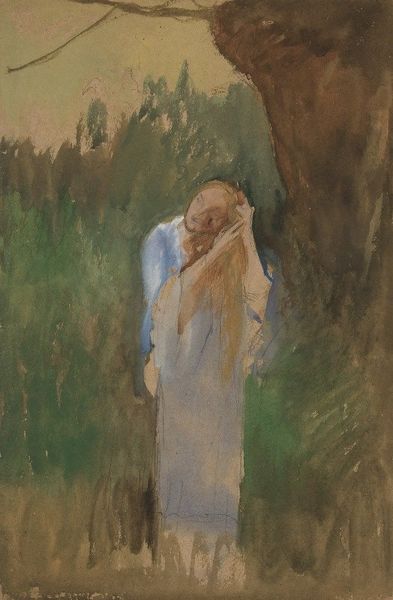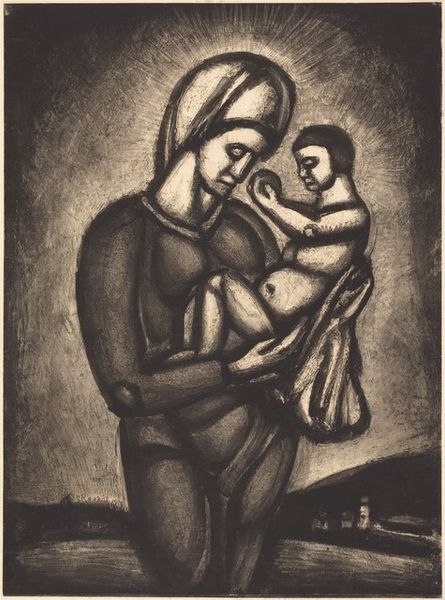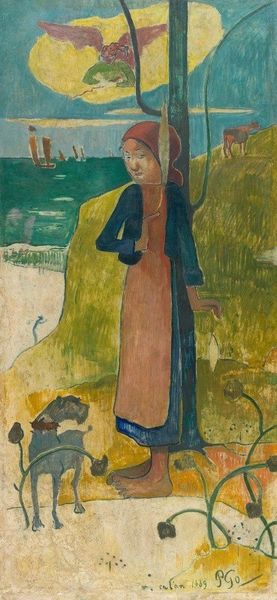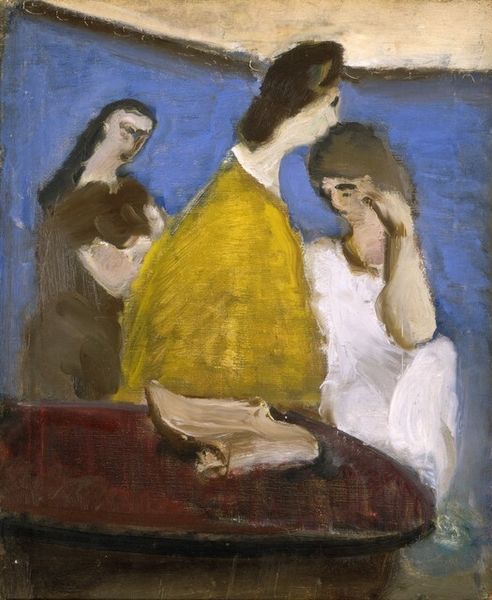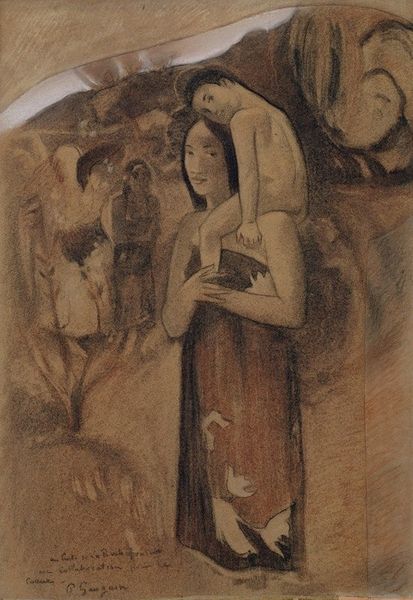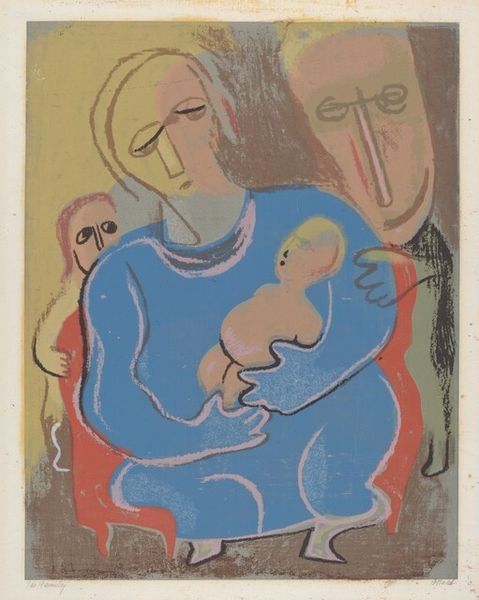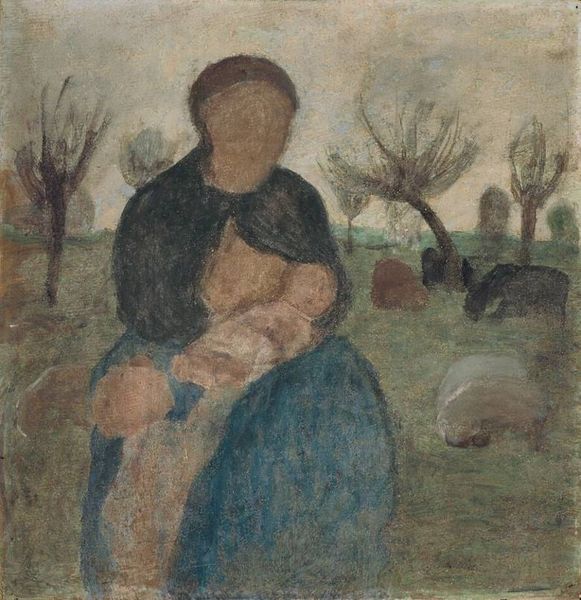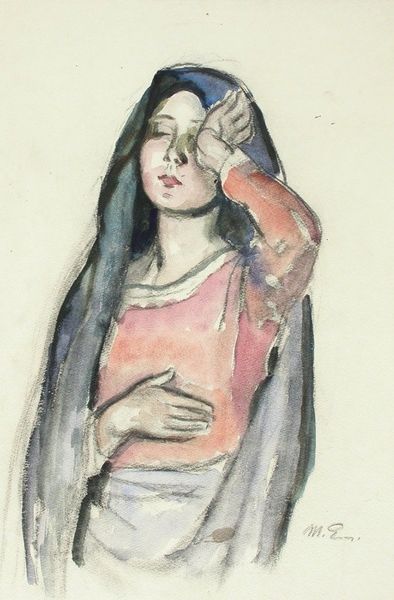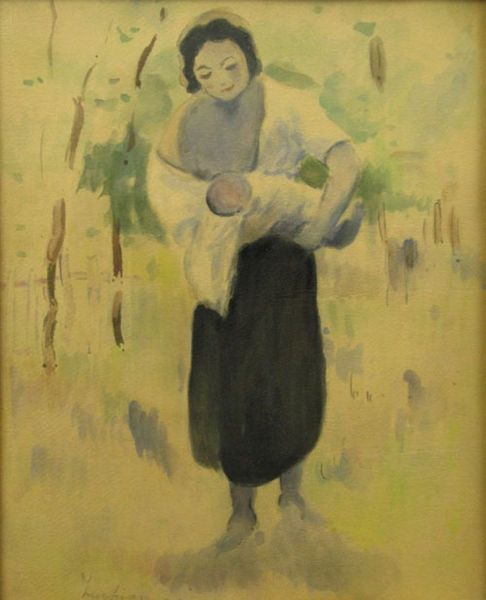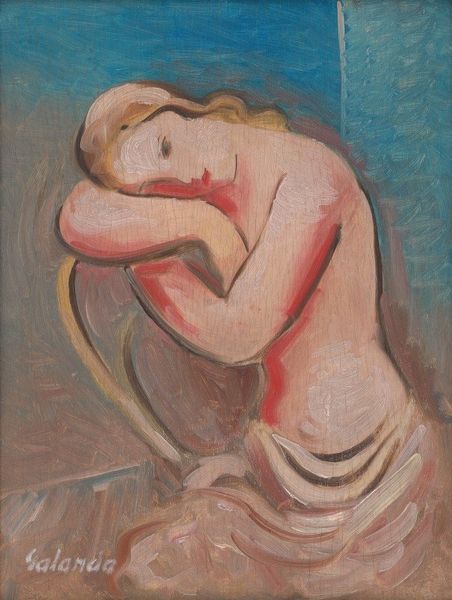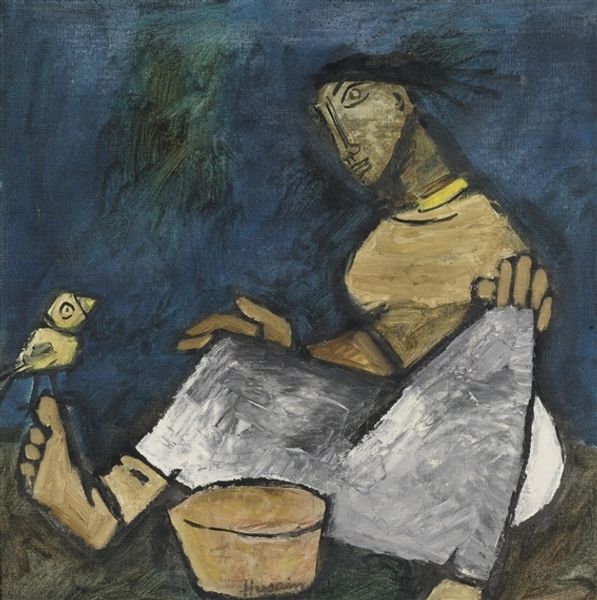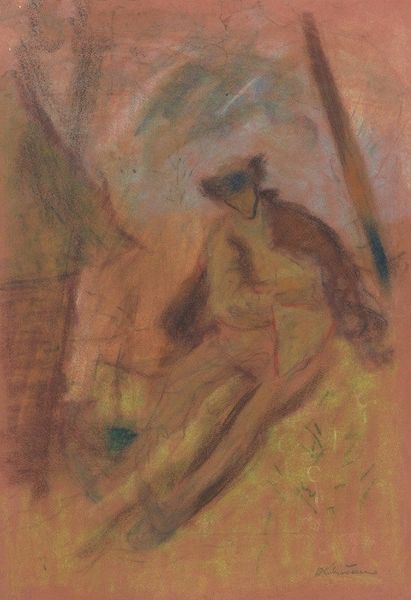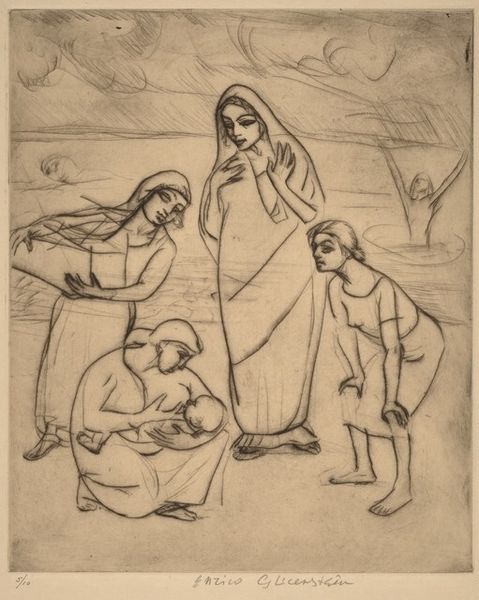
drawing, pastel
#
portrait
#
drawing
#
figurative
#
water colours
#
landscape
#
figuration
#
naïve-art
#
pastel
Copyright: Public Domain: Artvee
Editor: Here we have "Mother with a Child," a pastel drawing made in 1940 by Arnold Peter Weisz-Kubínčan. It strikes me as particularly gentle in its depiction of motherhood. What's your take on this work? Curator: The use of pastel here is incredibly interesting. Pastel, as a medium, exists in a peculiar space. It's both drawing and painting, high art and a simple, readily available material. Think about the artist, Kubínčan, working during the rise of industrial society, using humble materials to elevate a universal subject – motherhood. Does that challenge any notions of "high art" for you? Editor: Absolutely. Thinking about pastel as readily accessible… did its affordability change who could make art, and what kind of art they could produce? Curator: Precisely! It democratizes creation. Artists like Kubínčan, who may not have had access to traditional oil paints or formal training, could still create powerful images using inexpensive materials like pastels. And, think about the social context. 1940. What does the subject matter, the landscape setting, made with easily available materials, say about the culture? Editor: Perhaps a need for comfort and intimacy in a time of turmoil, rendered with available resources? Focusing on something familiar, the everyday… Curator: Exactly! The pastel medium, the artist's technique, and even the subject matter are all interwoven. The artwork’s production becomes intrinsically connected to cultural experiences of a changing world. Editor: I'd never considered the socioeconomic aspect of artistic mediums before. It sheds light on how materials themselves play a critical role in art. Curator: Indeed. It transforms how we appreciate art; recognizing the cultural value lies not just in subject but how art's physical existence becomes inextricably bound to a social and historical context.
Comments
No comments
Be the first to comment and join the conversation on the ultimate creative platform.

